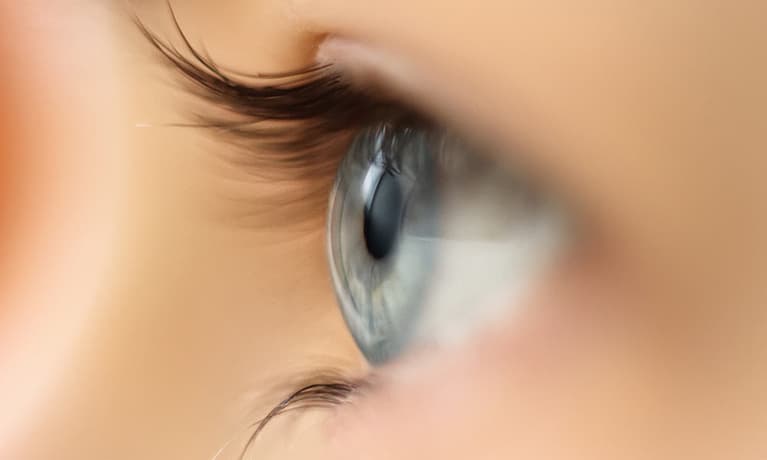What are Floaters?
Floaters appear in your vision as small, shadowy objects that look like spots, strands, squiggly lines or spider web shapes. They are called floaters because they seem to float in your vision, darting away when you try and look directly at them. They don’t follow your eye movements precisely and often continue to drift when your eyes stop moving. They are more visible when looking at a lightly colored, homogenous background like a white wall or the sky. Floaters usually are gray or translucent, but may sometimes appear black.

Floaters are actually tiny clumps of fibers within the vitreous, the gel-like substance that fills the eye. While these objects look like they are in front of your eye, they are actually floating inside the vitreous. What you see are the shadows they cast on the retina, the nerve layer at the back of the eye that senses light and allows you to see.
In most cases, floaters are part of the normal aging process and are simply an annoyance. They can be distracting at first, but eventually tend to settle away from your line of sight. Most people have floaters and learn to ignore them; typically they are not noticed until they become quite numerous or dense and centrally located.

As we age, the vitreous gel contracts and pulls away from the back of the eye, separating from the retina. This is called a posterior vitreous detachment. A posterior vitreous detachment is a normal event that occurs in all eyes, usually after age 40. It is during this vitreous separation that people are at risk for developing a retinal tear or retinal detachment. People at greatest risk for a retinal tear or detachment are those who have the sudden onset of new floaters or an increase in the number, or change in location of pre-existing floaters. While a retinal tear or detachment is serious, it is worth noting that retinal tears and detachments are rare conditions and that very few people with a vitreous detachment will develop either of these problems. There is no specific treatment for separation of the vitreous gel from the retina, and it is not necessary for the vitreous to be reattached to the retinal surface.
There is no cure for floaters; however they typically improve and become less noticeable with time. The important thing to remember is that the abrupt onset of floaters or a change in the appearance of pre-existing floaters warrants an exam within 24 hours.
What are flashes?
The perception of light flashes results from pulling between the vitreous and the retina, or whenever there is any mechanical force acting upon the retina. When the vitreous gel inside your eye tugs on the retina, you may see what look like momentary flashing lights or lightning streaks.
Rarely, pulling of the vitreous on the retina, as occurs during a posterior vitreous detachment, can result in a tear in the retina. A retinal tear, if not diagnosed and treated, can lead to a retinal detachment.

A retinal detachment occurs when any part of the retina is lifted or pulled from its normal position on the back wall of the eye. A retinal detachment is a serious condition and should always be considered an emergency. If left untreated, it can lead to permanent vision loss. Those who experience a sudden increase in floaters, flashes, or a loss of peripheral vision should have their eyes examined as soon as possible.
People who suffer from migraines may experience a different type of flashing phenomenon in their vision. This disturbance has been described as a shimmering light, similar to a kaleidoscope or jagged lines of lightning. The flashing can pulsate or change shape and often persists for up to 30 minutes. A headache may or may not follow the flashing, and not all migraine sufferers will experience this visual disturbance. These kinds of visual flashes are not risk factors for the development of a retinal tear or detachment. The important distinction is the duration. Flashes from retinal traction last only a fraction of a second. Flashes due to a migrainous event continue for many minutes.
While most floaters and flashes are not caused by a serious problem, it is important to have a thorough eye examination when the symptoms are new. Prompt treatment of a retinal tear or detachment, if necessary, is very important to preserving good vision.
Where Can I Get More Information?
To schedule an appointment call 414-271-2020.










